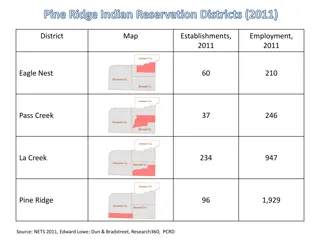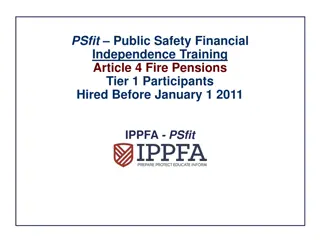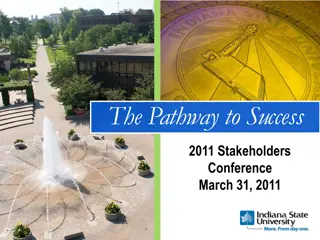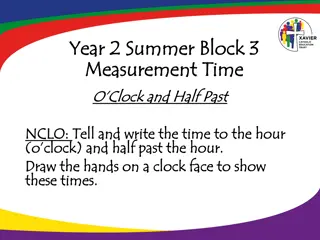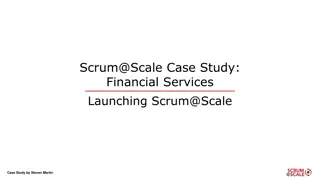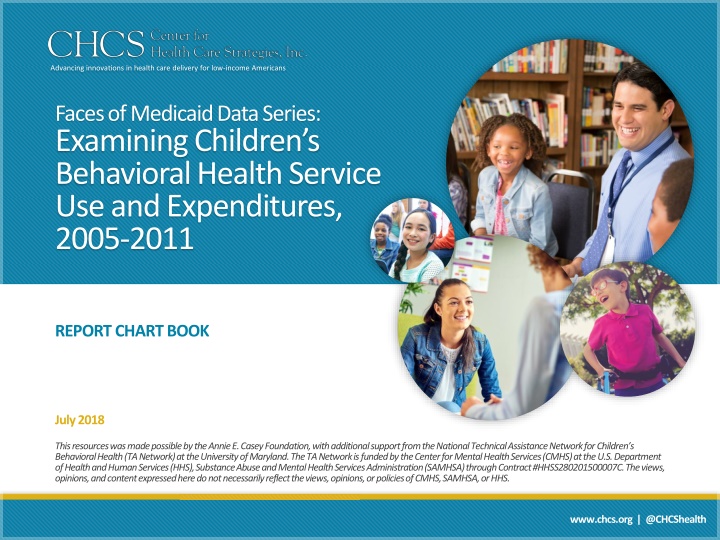
Examining Children's Behavioral Health Service Use in Medicaid
Explore data from 2005 to 2011 on Medicaid's child population growth, behavioral health care utilization, and expenditure patterns. Discover insights into children receiving behavioral health services and psychotropic medications under Medicaid coverage.
Download Presentation

Please find below an Image/Link to download the presentation.
The content on the website is provided AS IS for your information and personal use only. It may not be sold, licensed, or shared on other websites without obtaining consent from the author. If you encounter any issues during the download, it is possible that the publisher has removed the file from their server.
You are allowed to download the files provided on this website for personal or commercial use, subject to the condition that they are used lawfully. All files are the property of their respective owners.
The content on the website is provided AS IS for your information and personal use only. It may not be sold, licensed, or shared on other websites without obtaining consent from the author.
E N D
Presentation Transcript
Advancing innovations in health care delivery for low-income Americans Faces of Medicaid Data Series: Examining Children s Behavioral Health Service Use and Expenditures, 2005-2011 REPORT CHART BOOK July 2018 This resources was made possible by the Annie E. Casey Foundation, with additional support from the National Technical Assistance Network for Children s Behavioral Health (TA Network) at the University of Maryland. The TA Network is funded by the Center for Mental Health Services (CMHS) at the U.S. Department of Health and Human Services (HHS), Substance Abuse and Mental Health Services Administration (SAMHSA) through Contract #HHSS280201500007C. The views, opinions, and content expressed here do not necessarily reflect the views, opinions, or policies of CMHS, SAMHSA, or HHS. www.chcs.org | @CHCShealth
Since 2005, the Medicaid child population has increased by nearly 12%, yet the number of children receiving behavioral health care has increased by almost 33%. CHART 1. TOTAL POPULATION OF CHILDREN IN MEDICAID COMPARED TO THE TOTAL CHILDREN RECEIVING BEHAVIORAL HEALTH CARE, 2005 - 2011 32.4M 30.5M 29.0M 3.62M2.59M 2.79M 2.60M2.06M 2.16M 1.96M 1.84M 1.69M 2005 2008 2011 Children receiving behavioral health services Children receiving psychotropic medications Children receiving behavioral health care Children in Medicaid Source: Pires, S., McLean, J., and Allen, K., (2018) Faces of Medicaid Data Series: Examining Children s Behavioral Health Service Use and Expenditures, 2005-2011. Center for Health Care Strategies: Hamilton, NJ. 2
In 2011, 3.6 million children covered by Medicaid used behavioral health care, and of those children, 2.1 million received psychotropic medications. Of those children receiving these medications, nearly half (47%) received no accompanying behavioral health services. CHART 2. ALL CHILDREN IN MEDICAID USING BEHAVIORAL HEALTH CARE, 2011 (N= 3,617,140) Behavioral health service use, no psychotropic medications N=1,460,095 Using behavioral health services N=2,594,817 Behavioral health service use and psychotropic medications N=1,134,722 Using psychotropic medication N=2,157,045 Psychotropic medications use, no behavioral health services N=1,022,323 Source: Pires, S., McLean, J., and Allen, K., (2018) Faces of Medicaid Data Series: Examining Children s Behavioral Health Service Use and Expenditures, 2005-2011. Center for Health Care Strategies: Hamilton, NJ. 3
Behavioral health accounts for a disproportionate share of Medicaid spending for children, given the relatively small number of children who receive behavioral health care. CHART 3. CHILDREN USING BEHAVIORAL HEALTH CARE AS A PROPORTION OF TOTAL MEDICAID ENROLLMENT, 2011 66% 89% Total Children in Medicaid = 32.4M Children not using behavioral health care Children using behavioral health care 34% 11% Enrollment Expenditures Source: Pires, S., McLean, J., and Allen, K., (2018) Faces of Medicaid Data Series: Examining Children s Behavioral Health Service Use and Expenditures, 2005-2011. Center for Health Care Strategies: Hamilton, NJ. 4
Children in foster care and those with SSI/disability eligibility together represent only 8% of the Medicaid child population, but their care accounts for 49% of total behavioral health spending. CHART 4. MEDICAID ENROLLMENT, BEHAVIORAL HEALTH SERVICE USE, AND EXPENSE BY AID CATEGORY, 2011 2.6% 5.0% 11.1% 20.7% 16.8% 28.1% Foster Care SSI/Disability 92.4% TANF 72.1% 51.2% All Children in Medicaid Behavioral Health Service Use Behavioral Health Service Expense Source: Pires, S., McLean, J., and Allen, K., (2018) Faces of Medicaid Data Series: Examining Children s Behavioral Health Service Use and Expenditures, 2005-2011. Center for Health Care Strategies: Hamilton, NJ. 5
Adolescents, ages 13-18, represent 22% of the overall Medicaid child population, but account for 38% of children in Medicaid using behavioral health services, and nearly 50% of total behavioral health care expenditures. CHART 5. MEDICAID ENROLLMENT, BEHAVIORAL HEALTH SERVICE USE AND EXPENSE BY AGE GROUP, 2011 45% All Children in Medicaid 22% 33% Behavioral Health Service Use 38% 45% 17% Behavioral Health Service Expense 49% 43% 8% Ages 13-18 Ages 6-12 Ages 0-5 Source: Pires, S., McLean, J., and Allen, K., (2018) Faces of Medicaid Data Series: Examining Children s Behavioral Health Service Use and Expenditures, 2005-2011. Center for Health Care Strategies: Hamilton, NJ. 6
Children in Medicaid are more likely to receive traditional behavioral health services, like outpatient treatment and psychotropic medications, vs. alternative evidence-based approaches. CHART 6. USE OF TRADITIONAL BEHAVIORAL HEALTH SERVICES VS. EVIDENCE-BASED SERVICES, 2011 Outpatient treatment (primarily individual) 53.6% Psychotropic medications 43.7% TRADITIONAL SERVICES Screening/assessment/evaluation 46.9% 24.2% Medication management Wraparound 1.5% Therapeutic foster care 0.5% Respite 0.2% Supported housing 0.3% EVIDENCE-BASED SERVICES Peer services 0.3% Home-based (e.g., in-home care) 0.1% Activity therapies 0.1% Source: Pires, S., McLean, J., and Allen, K., (2018) Faces of Medicaid Data Series: Examining Children s Behavioral Health Service Use and Expenditures, 2005-2011. Center for Health Care Strategies: Hamilton, NJ. 7
Children in Medicaid from racially/ethnically diverse backgrounds are less likely than white children to use behavioral health services. CHART 7. MEDICAID ENROLLMENT AND BEHAVIORAL HEALTH SERVICE USE BY RACE/ETHNICITY, 2011 7.6% 8.8% 0.7% 1.0% 5.3% 4.6% 0.5% Unknown 0.2% 12.8% More than one race 22.4% 0.7% 1.4% Hispanic or Latino + one or more races 2.4% 1.2% 23.2% Native Hawaiian or Pacific Islander Hispanic or Latino 22.8% Asian American Indian or Alaska Native 47.4% Black or African American 37.0% White All Children in Medicaid Behavioral Health Service Use Source: Pires, S., McLean, J., and Allen, K., (2018) Faces of Medicaid Data Series: Examining Children s Behavioral Health Service Use and Expenditures, 2005-2011. Center for Health Care Strategies: Hamilton, NJ. 8
Residential treatment/therapeutic group care used by just over 4% of children account for the largest proportion of expenditures at nearly 22% of total behavioral health expenditures. CHART 8. COMPARISON OF USE AND EXPENSE FOR CHILDREN S BEHAVIORAL HEALTH SERVICES IN MEDICAID WITH HIGHEST TOTAL EXPENDITURES, 2011 53.6% 43.7% Total Users Total Expenditures 21.7% 16.4% 10.1% 4.2% Residential Treament/ Therapeutic Group Homes Outpatient Treatment (primarily individual) Psychotropic Medication Source: Pires, S., McLean, J., and Allen, K., (2018) Faces of Medicaid Data Series: Examining Children s Behavioral Health Service Use and Expenditures, 2005-2011. Center for Health Care Strategies: Hamilton, NJ. 9

